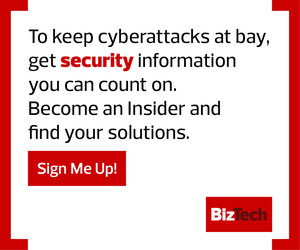How the Financial Sector Is Benefiting from DRaaS
The shift to DRaaS in early 2022 was a game changer for Automated Financial Systems.
Over the past year, AFS, an Exton, Pa.-based provider of lending and risk management solutions for financial institutions, has been moving its commercial lending system for clients from its legacy mainframe environment to its new distributed cloud platform, AFSVision. The new environment, consisting of Linux-based virtual machines running on-premises or in the cloud, uses continuous data protection from Zerto.
Continuous data protection provides a journaled replication of the entire environment in nearly real time. It allows AFS to spin up its second site with the same network parameters as the primary site.
“It’s an identical replica,” explains Radford Laney, senior vice president and CIO at AFS. “There are no choices about whether to replicate this or that. Before, there was a lot of parsing of things because you wanted to save money. Now, we just push it all over all the time.”
That’s an important component in simplifying DR environments, says Goodwin. Organizations can highly compress data or deduplicate it, for instance, allowing them to replicate sites while maintaining a minimal cloud footprint.
That translates into higher confidence that they can execute the failover without error, Laney says: “The whole idea of DR really comes down to making it business as usual instead of some special event. It’s something that you do every day, and you have confidence that it will support you in a time of need. It shouldn’t feel like it’s a moonshot.”
LEARN MORE: How this Wisconsin-based insurance company benefited from DRaaS.
The Role of the Cloud in DRaaS
Before the cloud, DR was anything but business as usual. Laney recalls a time years ago, while working at an international bank, that he and his team created a DR system for a foreign exchange platform with a one-hour failover. When the exchange went down for 12 hours, higher-ups wanted answers.
“Turns out, they took 11 hours to decide to fail over,” Laney says. “They had to go to the boss and the boss’s boss. They had to escalate up to the president, who was on a boat somewhere. It was just this ridiculous series of approvals.”
That’s because DR was difficult in those days, he says. Systems were complex and painful to manage. Even if a company decided to fail over to a DR site, the idea of reversing it was often daunting.
“Disaster recovery has always been like a pebble in your shoe: It’s always there and it always hurts. That’s what we’re trying to avoid now,” Laney says.
DRaaS providers offer several other tools beyond continuous data protection, such as extensive testing capabilities and automated dependency mapping. The latter solution crawls through the network and application servers to locate connections and dependencies so organizations know what boot-order sequence to follow in restoring servers. “There are mission-critical applications that depend upon input from applications that are not considered mission-critical,” says Goodwin.
“In my old system, it was everybody goes or nobody goes,” says Laney. “That was a huge issue, because if you have a problem with one, like the saying goes, we all go like a bunch of lemmings over the hill.” Now, AFS can scale part of the virtual environment up and down or scale up one customer at a time. “It allows us to test individual customers as opposed to undertaking a massive coordination effort,” he says.











